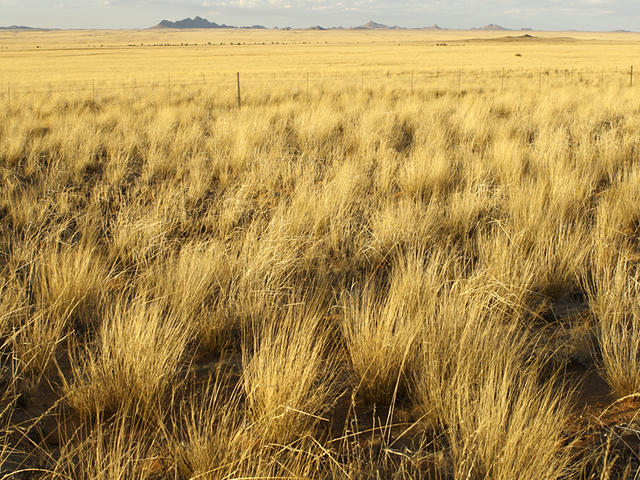Plants And Animals In Grasslands

An accumulation of the most effective Plants And Animals In Grasslands wallpapers and backgrounds designed for download for free. We hope you enjoy our growing collection of HD images to use as a background or home screen for your smartphone or computer. Please contact us if you want to publish a cute background on our site. Only the best wallpapers. Daily improvements of new, brilliant, HD wallpapers for desktop and phones.
A lot of awesome Plants And Animals In Grasslands wallpapers to help acquire to get free. You can also include and reveal your selected wallpapers. HD wall papers and historical past graphics

Pin by Nancy Baker on Z Summer on Sprogels Run Pinterest

grassland shoebox project Google Search Biomes project

Grassland Lapbook Savanna Lapbook Prairie Forest Lapbook

Plants and animals in grasslands
Various names of temperate grasslands include pampas, downs, and veldts. But the removal of key species—such as buffalo and prairie dogs within the american west—and introduction of invasive species , like cane toads in northern australia, have disrupted the balance in these ecosystems and damaged a number of. Temperate grasslands can be found in various regions north and south of the equator including argentina, australia, and central north america. Having thick roots, under ground. Animals and plants inhabiting this natural wonder. Grass is the predominant plant found in the grassland. Any list of grassland plants is sure to include plenty of grasses since they make up the majority of the area's vegetation. These plants often survive wildfires due to fact that their stems and buds grow underground. The largest ruminating animal on the planet, giraffe; The grass in a grassland may be tall or it may be short. As its name indicates, grasslands are areas in the world where grasses dominate the lands. The factors preventing establishment of such taller, woody vegetation are varied. Grasslands include prairies, steppes, plains and savannah. Plants and animals living in the grasslands must be able to adapt to the lack of trees and heavy brush for shelter as well as the seasonal drought and limited rainfall. The grassland biome is the characteristic community of animals and plants found in the world’s grasslands.
In between, you have hundreds of animals, across different genera, including insects, reptiles, birds, etc. Each of these animals have adapted themselves to the conditions prevailing in this biome. Large numbers of birds, grazing mammals, reptiles, insects and predators live throughout the grasslands of the world. Grasslands are large, flat, treeless areas of land covered with grass. Vegetation on the african savannas, for example, feeds animals including zebras, wildebeest, gazelles, and giraffes. They use the sunlight to produce food for themselves and other animals such as the bison and the foxes. Grasslands cover 25 percent of the world’s surface. The few trees and shrubs that grow in temperate grasslands typically cannot withstand flames. Flooded grasslands and savannas is a terrestrial habitat type of the wwf biogeographical system, consisting of large expanses or complexes of flooded grasslands. The american bison, pronghorn, coyote, and gopher are just some of the animals that live in the grasslands. Grasslands differ around the world, from the prairies of north america to the african savanna. The considerably lengthy list of animals inhabiting the grasslands begins with invertebrates, like carrion beetles and tiger beetles, and ends with large mammals, like elephants and giraffes. The plants in the grasslands like grass and fescue are a source of food. Grasslands are regions on earth in which the dominant plants are grasses. Many grassland animals feed on grasses, thriving due to the grasses’ close growth point to the ground.
Grassland, area in which the vegetation is dominated by a nearly continuous cover of grasses. Plants of the temperate grasslands. These areas support numerous plants and animals adapted to the unique hydrologic regimes and soil conditions. Advertisement meanwhile, the southeastern grasslands initiative is working to restore thousands of acres of other grasslands while also developing a seed bank, discovering new species and leading volunteers to search for remnants. This plants species, prefers moisture and good drainage, however, will also tolerate summer dryness. Grassland plants and animals grasslands support a variety of species. In temperate grasslands, though, there are also quite a few wildflowers, whereas tropical grasslands are home to many trees that are uniquely adapted to the grassland biome. One of the most aggressive animals on the planet, the hippopotamus, elegant lions, swift black mamba, and so on. In the grasslands where grass is the main plant found in the ecosystem, it is eaten by hundreds of other. In north america, the grassland may be called the plains or a prairie. You're going to either create a poster, a digital presentation or write a short essay on the plants and animals of a specific grassland. The grassland biome is also called prairies, steppes and plains. No matter which continent, grasslands support a wide variety of animal life. Grasslands have many names—prairies in north america, asian steppes, savannahs and veldts in africa, australian rangelands, and pampas, llanos and cerrados in south america. When it comes to animals, grasses and similar plants are certainly a special culinary delight!
The prairies contained more than 80 species of animals and 300 species of birds, and hundreds of species of plants. It is a flat area that has periods of drought and thin soil so that trees cannot survive. Grasslands span across the world, covering roughly a quarter of the total surface area of the planet. Animals on the grasslands are exposed to their predators because of the openness of the landscape. Grasslands are home to the largest animal on land, the african elephant; There are two different types of grasslands; The stems grow up to 60 centimeters. Temperate grasslands are areas of open grassy plains that are sparsely populated with trees. Unlike savannas, where there is a large diversity of animals present, temperate grasslands are generally dominated by just a few species of herbivores such as bison, rabbits, deer, antelope, gophers, prairie dogs,and antelopes. But they are all places where there is too little rain for trees to grow in great numbers. This plant has both female and male plants. Grasslands are found on every continent except antarctica, and in total cover between 30 and 40% of earth’s land area. Fire is a common phenomenon in grasslands. Grasslands occur in environments conducive to the growth of this plant cover but not to that of taller plants, particularly trees and shrubs. Another adaptation would be its ability to get water and nutrients from another area due to its roots.
The plants and animals that live in grasslands are connected through an unlimited web of interactions. Some of the common varieties include, buffalo grass, cacti, sagebrush, blazing stars, goldenrods, asters, milkweed, lupines, purple coneflower, clovers and sunflowers. There are not many places for prey animals to hide from predators in grasslands. This means that they have many holes, and burrows which enables them to escape easily when they are being chased by a predator. Other plants like trees and big shrubs cant grow in the grasslands, because of the nature and conditions of those lands. These plants will thrive, in a variety of different types of soil, and will attract lots of bees throughout the year. It can be propagated by seed, and self sows. The presence of grasslands on our planet is extremely crucial for the survival of thousands of plants and animals.
Related post:


Savanna Biome Location, Climate, Temperature, Plants and

elymus virginicus Google Search Grasses/Sedges/Rushes

African grasslands... Ozzy's Preschool Park Savannah

SPANISH El Bioma de Pradera (The Grassland Biome

African Savanna Ecosystem Climate Savanna Biome

Native grasslands and grassy woodlands Architecture

Temperate grassland grasslandheadsmashedinbuffalo

The Serengeti Plain Facts about National Park & Animals

Comanche National Grassland, Colorado. Color Landscape

Learn about Food Webs and African Grasslands from

Grassland Biome Animals and Plants Inhabiting This

"The Grasslands Trust? Do you conserve African savannah

Savanna Lapbook Inside Homeschool science

Sheep on the grassland Dhorpatan Hunting reserve, Thula

Savanna Grassland Biome Africa trees, African plants

Calamagrostis brachytricha (Foxtail Grass) One of the few

Dominant plants in the African Savanna Savanna biome

Landscapes Bringing Back the Rich Grasslands of
That's all about Plants And Animals In Grasslands, The presence of grasslands on our planet is extremely crucial for the survival of thousands of plants and animals. It can be propagated by seed, and self sows. These plants will thrive, in a variety of different types of soil, and will attract lots of bees throughout the year. Other plants like trees and big shrubs cant grow in the grasslands, because of the nature and conditions of those lands. This means that they have many holes, and burrows which enables them to escape easily when they are being chased by a predator. There are not many places for prey animals to hide from predators in grasslands.



